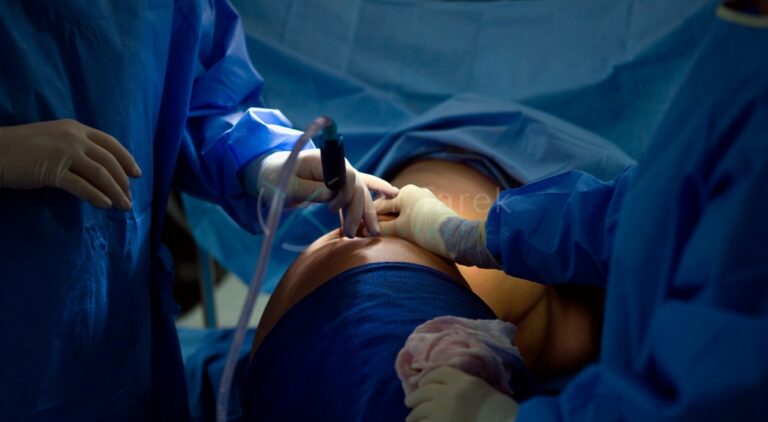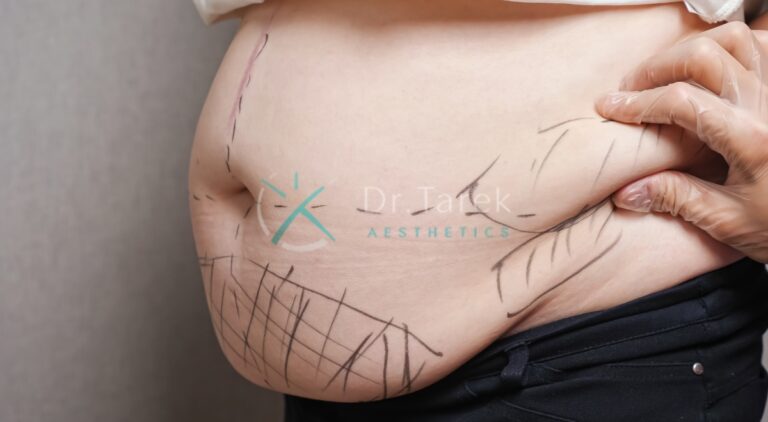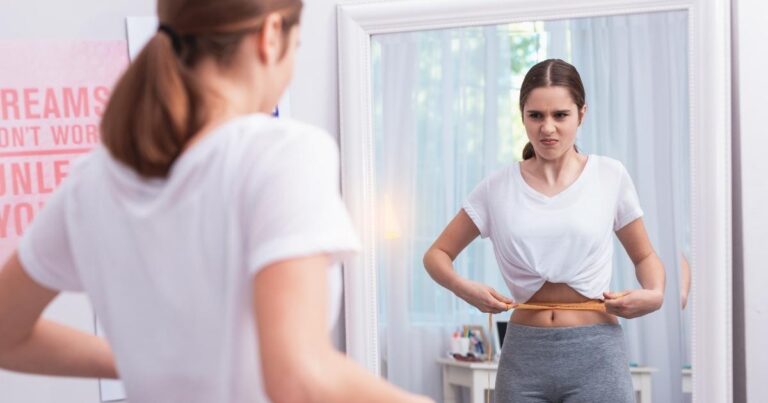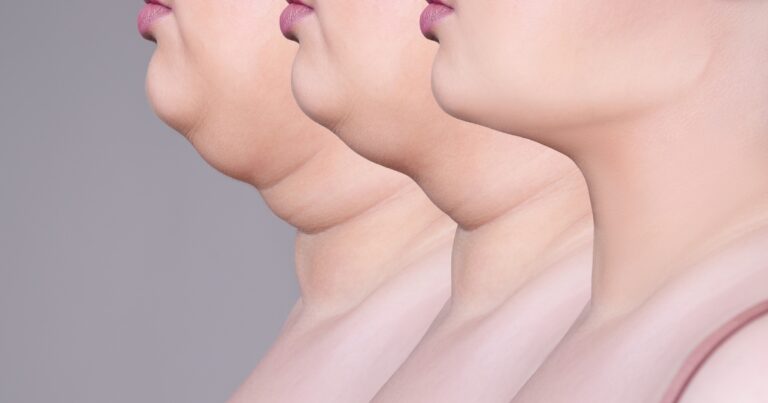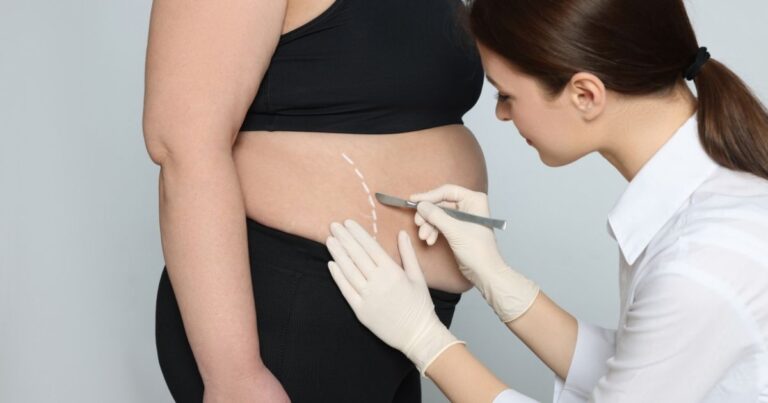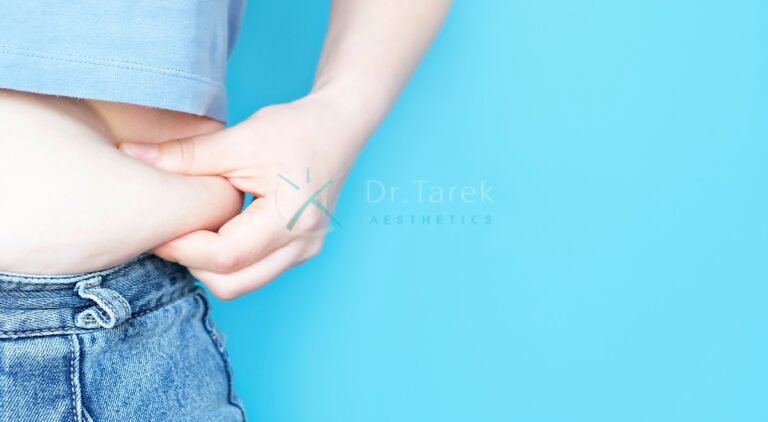Ultrasound-assisted liposuction, also known as Vaser liposuction, is a type of plastic surgery, conducted to reduce fat. This procedure liquefies fat using ultrasonic waves. The fat is then sucked out using a thin medical vacuum or a cannula. Surgeons use this technique for stubborn fat areas, such as the chin, neck, knees, ankles, or feet.
There are two kinds of ultrasonic liposuction; internal and external ultrasonic liposuction.
As the name suggests, the difference between the two lies in the technique. External ultrasonic liposuction operates outside the body, while internal ultrasonic liposuction involves inserting a probe into the patient. To get a clear understanding of the two, here is the science behind them;
History
UAL began in the early 1990s in Italy. The American Society of Plastic Surgeons then picked it after seeing its opportunities. He made an effort to advance the technique and train members on it.
Book A Consultation With Dr Tarek Bayazid
Top-rated Plastic Surgeon For Liposuction in Dubai
Installment Plan Available
In 2003, Rohrich used UAL on 61 patients with gynecomastia. He recorded an 86.9% success rate from the patients. Milanese also carried out a study on 28 young women of regular weight. After 10 weeks of low-intensity and low-frequency-focused treatments, their adipose tissue was reduced.
External Ultrasound Liposuction
In this procedure, the ultrasound is externally submitted through the skin surface. EUAL at 2-3 MHz and 3 W disrupts fat tissue, adipose cells, and collagen networks. Thus, it impacts body contouring, particularly among people with chronic cellulitis and fibrous. The procedure uses a paddle-like tool to administer sonic vibrations to fatty body parts. EUL does not involve any incisions, which reduces downtime.
There are two methods of EUAL. One uses a transducer and a different method for fat removal , whereas the other uses suction to expedite the liquid fat.
Preparation
The first step is consulting your doctor to discuss your goals, benefits, risks, and the best options. You may need to restrict certain foods like processed food and sugary substances. It’s best to stay away from alcohol and caffeine as well. This will keep your inflammation at bay and ensure you get better results.
In the preparation process, you need to disclose whether you are on any medication or supplements. Your doctor may need to carry out laboratory tests to pinpoint any problems.
You’ll get a complete description of the procedure from your doctor. Once you confirm all the details, you can give informed consent. The doctor then marks the areas that need treatment, then administers antibiotics an hour before the procedure.
Depending on the areas requiring treatment, your doctor may give you local or general anesthesia. They then sterilize the areas with betadine or povidone-iodine.
The fat disruption process can now begin using an EUAL machine. They place a transducer on the problem areas and move it in circular movements to apply energy to all places.
Post-procedure
After the procedure, the doctor can recommend acetaminophen or antibiotics. They may also recommend wearing compression garments to accelerate healing. It’s not advisable to engage in high-impact exercise immediately after. Light exercise like walking will suffice.
In some cases, doctors use EUAL in preparation for traditional liposuction. The high-intensity ultrasound helps by;
Internal Ultrasound Assisted Liposuction
As indicated earlier on, the significant difference between EUAL and IUAL is that IUAL is invasive. In an IUAL procedure, the doctor inserts a probe to break up the fat cells in the treatment areas. The probe has sonic vibrations to ease this process. These vibrations burst the fat cell membranes, causing them to liquefy. Extracting the fat tissue becomes easier. Since the fat is in liquid form, the process is smoother, less traumatizing to the body, and causes less bruising.
Effectiveness
A 2010 report by the Aesthetic Surgery Journal showed that 80% of 609 people who went through UAL between 2002-2008, got satisfactory results. The measure of satisfaction was fat loss.
In the same study, 35% of the patients gained weight within the first year of treatment. They recommended that UAL patients undergo lifestyle counseling before and after the procedure for better weight management. Without a proper lifestyle incorporating exercise and healthy eating, gaining weight in the treated areas is inevitable.
After the study, scientists also recommended that UAL patients should have normal weight before the procedure. This decreases the chances of complications and confirms that the patient already has healthy habits.
The Downside
UAL is a more precise liposuction, but it comes with some downsides. You may experience more scarring with UAL compared to Suction Assisted Liposuction. There is also a risk of infection, just like with other procedures.
You could also develop seromas, which are fluid-filled pockets that appear in the areas where treatment takes place. Seromas result from dead cells and old plasma leaving the body after the lipoplasty.
Generally, the complications you may experience with EUAL are;
Despite the possible side effects, UAL offers some significant benefits. It is highly recommended by plastic surgeons worldwide due to its minimal risks. You get to target fat, which is not possible with exercise. It also increases skin contractions and preserves nerves surrounding the treatment areas.
To further reduce the chances of complications, ensure you choose a qualified medical practitioner. Techniques in Ultrasound Assisted liposuction are constantly advancing in terms of safety and sophistication. This is to give patients the best care. While they’re great, the modifications should not endanger your life.
You can take time to study a doctor’s style of Ultrasound-Assisted liposuction before settling on one. Reviews and recommendations are also great for settling on the right doctor. You can ask for a doctor’s gallery of patient cases and their before and after photos. Dr. Tarek Bayazid shares several such transformations on his website. Get a quote today, and start on your journey.


